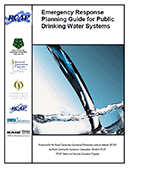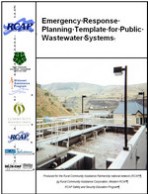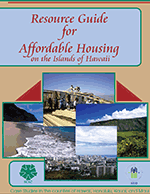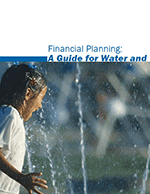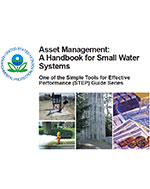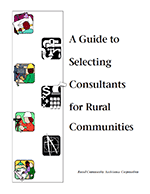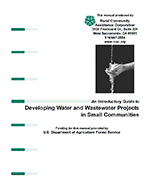-
Emergency Response Planning Guide for Public Drinking Water Systems
Safe and reliable drinking water is vital to every community. Preparing an emergency response plan (ERP) is an essential part of managing a drinking water system. Rural Community Assistance Corporation has developed this guidance and instruction manual for public water systems serving 3,300 population or less to help them develop such plans. (Published 2005.)
Read More -
Emergency Response Planning Guide Template for Public Wastewater Systems
Preparing an emergency response plan is an essential part of managing a wastewater system. Small wastewater systems can use this template to help them develop such plans. (Published 2005.)
Read More -
Resource Guide for Affordable Housing on the Islands of Hawaii
Located more than 2,000 miles from the nearest continent, Hawaii is the most remote island chain in the world. The distance creates a kind of splendid isolation, with these Polynesian islands removed from all but one another. Hawaii consists of eight major islands and 124 minor islands with reefs and shoals strung across the Pacific for over 1,500 miles. The eight major islands, providing more than 99% of the total land area, are Oahu, Maui, Hawaii, Kauai, Molokai, Lanai, Kahoolawe (uninhabited) and Niihau (privately owned).
With Hawaii’s offerings of a diverse culture, subtropical weather, vibrant ecosystems and the “aloha spirit” of the people, the Hawaiian archipelago has long been considered among the world’s most desirable places to live. But for many of today’s residents, living in paradise has become a daily struggle. The extreme disparity between low-wage positions and high-cost housing, coupled with decades of inadequate affordable housing development has resulted in the lowest rate of home ownership in the nation, a severe need for low-income rental housing and the fastest growing homeless population in the county. (Published 2007.)
Read More -
Financial Planning: A Guide for Water and Wastewater Systems
Written as a workbook, this guide provides a process for developing and monitoring a utility budget, evaluating rate structures and developing a 5-year financial plan. Strategic tips, information and resources are included throughout this guide. In addition, the guide includes references to worksheets with examples, as well as blank worksheets in which to insert your specific system information. In order to fully take advantage of this guide, you will need a computer and some spreadsheet knowledge. (Published 2005.)
Financial Guidebook Worksheets
Read More -
Asset Management: A Handbook for Small Water Systems
This guide is designed for owners and operators of small community water systems (CWSs). CWSs include all systems (both publicly and privately owned) with at least 25 year-round residential customers or 15 year-round service connections. Typical systems that may find this guide useful include: small towns, rural water districts and Tribal systems. (Published 2003.)
Read More -
A Guide to Selecting Consultants for Rural Communities
This booklet outlines a step-by-step process for selecting and hiring consultants to plan, design and manage construction of public water and wastewater facilities. The process applies to hiring all types of consultants for all types of projects. (Published 2002.)
Read More -
Developing Water and Wastewater Projects in Small Communities
Many small communities in the Pacific Northwest are facing an infrastructure crisis. Water pipes are cracked and leaking; tanks need to be painted; and pumps need to be replaced. Wastewater plants must be upgraded to provide higher levels of treatment. Many factors have contributed to this situation, including lack of resources, years of neglect, recent growth and stricter regulations. Regardless of cause, these problems are real and small communities must decide what to do next. (Published 2001.)
Read More
